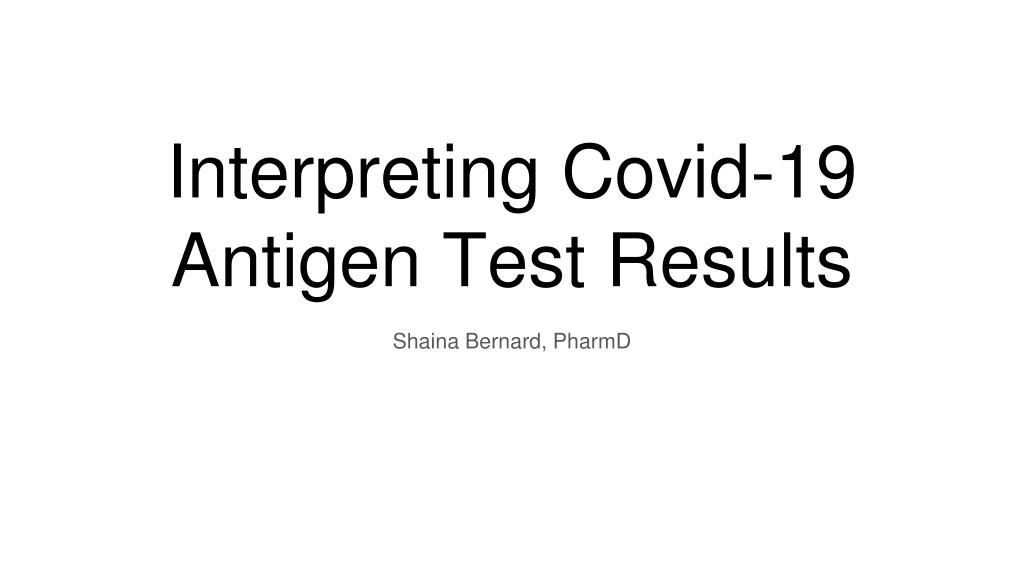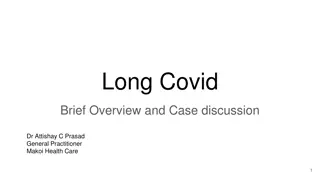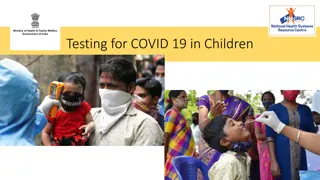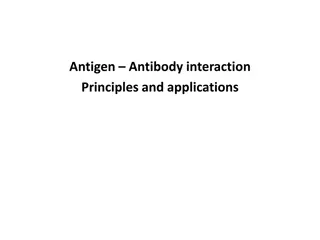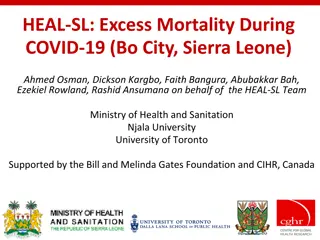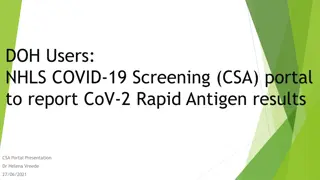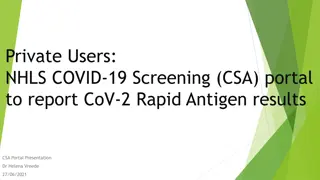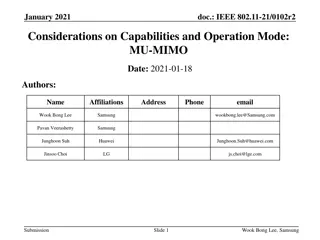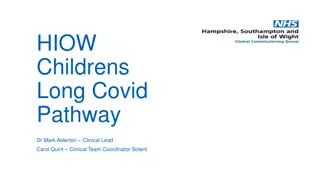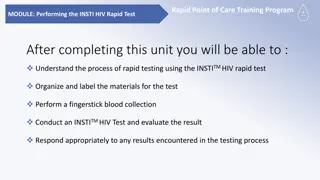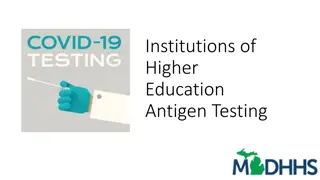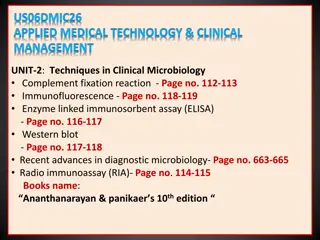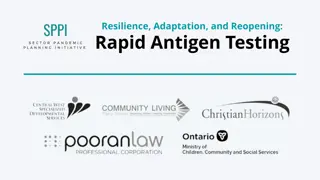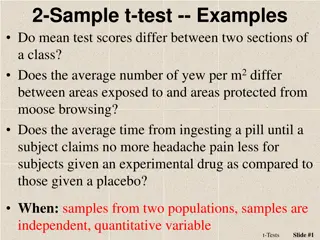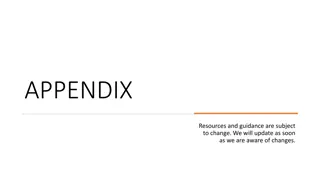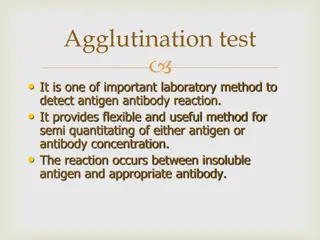Understanding and Interpreting COVID-19 Antigen Test Results
Infectious disease diagnostics for COVID-19 involve various factors such as clinical context, reasons for testing, test performance characteristics, and community prevalence. Different testing purposes like diagnostic, screening, and surveillance impact the interpretation of results. Antigen tests detect current infection, with false positives possible in low-prevalence settings. Positive results require self-isolation, contact quarantine, and appropriate patient management depending on symptoms and exposure. Understanding the test type and its implications is crucial for effective decision-making.
Download Presentation

Please find below an Image/Link to download the presentation.
The content on the website is provided AS IS for your information and personal use only. It may not be sold, licensed, or shared on other websites without obtaining consent from the author. Download presentation by click this link. If you encounter any issues during the download, it is possible that the publisher has removed the file from their server.
E N D
Presentation Transcript
Interpreting Covid-19 Antigen Test Results Shaina Bernard, PharmD
Overview Infectious disease diagnostics are complex, and the following factors should be taken into consideration: Clinical and epidemiological context of the person who has been tested Why was the test performed? Performance characteristics of the test (e.g. sensitivity, specificity) What test was performed? Prevalence of COVID-19 in that particular community What is the positivity rate over the previous 7 10 days?
Why was the test performed? Person has signs or symptoms consistent with COVID-19 Person is asymptomatic but has recent known or suspected exposure to SARS-CoV-2 Diagnostic Testing Purpose: To identify current infection in individuals Screening Testing Purpose: To identify persons who may be contagious so that measures can be taken to prevent further transmission Testing in congregate settings, such as a long- term care facility or a correctional facility, a workplace testing its employees, or a school testing its students, faculty, and staff Surveillance Purpose: To monitor for a community- or population-level infection and disease, or to characterize the incidence and prevalence of disease Randomly select and sample a percentage of all persons in a city on a rolling basis to assess local infection rates and trends. Performed on de-identified specimens, and thus results are not linked to individuals.
What type of test was performed? Viral Diagnostic Tests Molecular Antigen Detects SARS-CoV-2 antigens Detects SARS-CoV-2 RNA Turn around time ranges from 15 minutes to > 2 days Turn around time approximately 15 minutes Moderate cost Low cost High sensitivity and specificity Moderate sensitivity, high specificity More information on specific test performance (sensitivity, specificity) can be found on FDA website
Interpreting Antigen Test Results Clinical Context Antigen Test Positive Indicates current infection; false positives can occur, especially in low prevalence populations Patient should self-isolate and close contacts should self- quarantine until no longer infectious If admitted to a healthcare facility, use transmission-based precautions Follow situation-specific patient management (e.g., delay major surgeries, if possible, symptom management) Symptomatic OR Asymptomatic Close Contact
Interpreting Antigen Test Results Clinical Context Antigen Test Negative Indicates no antigens were detected; however, amount of antigen in a sample decreases as duration of illness increases, particularly 5 days after onset of illness. Repeat testing with a molecular test, especially in situations where an alternative diagnosis has not been identified, should be performed. If molecular testing is not available, clinical discretion can be used in whether to recommend the patient isolate. Recommend self-isolation based on exposure and symptoms Advise patient to follow protective measures in place in the community Symptomatic Indicates no antigens were detected Negative test does not rule out the potential for future infection Patient should remain in quarantine for 14 days after the last date of exposure until indicated False negatives can occur; consider repeat testing with a molecular test, if necessary for patient management Asymptomatic Close Contact
Resources CDC VDH Interim Guidance for Rapid Antigen Testing COVID-19 Testing
